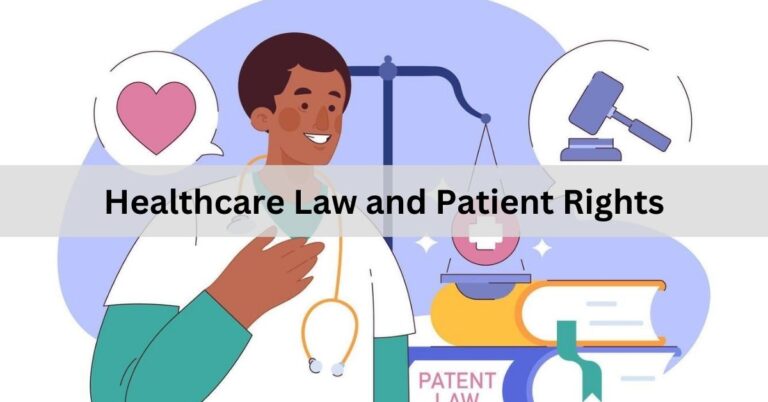Employment law encompasses a diverse array of regulations, statutes, and legal principles designed to govern the relationship between employers and employees, safeguarding rights, promoting workplace fairness, and ensuring occupational safety. This comprehensive guide delves into the foundational aspects of employment legislation, examines the rights and responsibilities of both employers and employees, explores discrimination and workplace diversity laws, analyzes occupational health and safety regulations, discusses the legal implications of remote work and the gig economy, compares dispute resolution methods, and assesses the transformative impact of technology on modern employment practices.
Contents
- 1 Overview of Employment Legislation
- 2 Rights and Responsibilities of Employers and Employees
- 3 Discrimination and Workplace Diversity Laws
- 4 Occupational Health and Safety Regulations
- 5 Legal Aspects of Remote Work and Gig Economy
- 6 Employment Dispute Resolution: Mediation vs Litigation
- 7 Impact of Technology on Employment Law
- 8 Conclusion
Overview of Employment Legislation
Employment legislation forms the backbone of regulatory frameworks that govern labor relations, employee rights, and workplace standards. These laws encompass a broad spectrum, addressing areas such as wages, working hours, leave entitlements, benefits, workplace safety, and anti-discrimination measures. By setting clear guidelines and standards, employment legislation aims to protect the interests of both employers and employees while fostering a conducive and equitable work environment.
Rights and Responsibilities of Employers and Employees
Central to employment law are the rights and responsibilities that define the employer-employee relationship. Employers are legally obligated to provide fair wages, safe working conditions, and adhere to employment contracts and agreements. Employees, in turn, have the right to fair treatment, privacy protection, freedom from discrimination and harassment, and the opportunity to organize and bargain collectively. Understanding these rights and responsibilities is essential for maintaining a harmonious and productive workplace.
Discrimination and Workplace Diversity Laws
Discrimination laws play a crucial role in promoting workplace equality and inclusivity by prohibiting unfair treatment based on protected characteristics such as race, gender, age, disability, religion, and sexual orientation. Workplace diversity laws encourage employers to implement affirmative action measures, accommodate diverse workforce needs, and foster an environment where every employee can thrive regardless of background or identity. Effective implementation of these laws helps prevent discrimination in hiring, promotion, compensation, and termination, contributing to a more equitable and diverse workforce.
Occupational Health and Safety Regulations
Occupational health and safety (OHS) regulations are designed to protect employees from workplace hazards and ensure their health and well-being. These regulations mandate employers to conduct risk assessments, provide adequate training, implement safety protocols, and maintain a safe working environment. Compliance with OHS standards not only reduces the risk of workplace injuries, illnesses, and fatalities but also enhances employee morale, productivity, and organizational reputation as a responsible employer.
Legal Aspects of Remote Work and Gig Economy
The emergence of remote work and the gig economy has introduced new complexities to employment law, particularly concerning worker classification, benefits eligibility, and labor protections. Remote workers and gig economy participants often operate outside traditional employment structures, raising questions about contractual rights, intellectual property ownership, tax obligations, and jurisdictional issues. Legal frameworks must adapt to address these challenges while ensuring that workers in non-traditional employment arrangements receive adequate protections and fair treatment under the law.
Employment Dispute Resolution: Mediation vs Litigation
Employment disputes can arise from various issues including wrongful termination, discrimination claims, wage disputes, and workplace conflicts. Two primary methods for resolving these disputes are mediation and litigation. Mediation involves a neutral third party facilitating negotiations between disputing parties to reach a mutually acceptable resolution. Litigation, on the other hand, involves presenting the dispute before a court of law, where a judge or jury decides the outcome based on legal arguments and evidence presented. Choosing the appropriate method depends on factors such as the nature of the dispute, desired outcome, cost considerations, and the willingness of parties to engage in cooperative resolution efforts.
Impact of Technology on Employment Law
Technological advancements have profoundly impacted employment practices, from recruitment and performance monitoring to data privacy and remote collaboration tools. Employment law must adapt to address legal implications related to digital transformation, including cybersecurity risks, protection of personal data, surveillance in the workplace, and the ethical use of AI and automation. Balancing innovation with legal compliance is crucial for ensuring that technological advancements benefit both employers and employees while upholding fundamental rights and ethical standards in the workplace.
Conclusion
In conclusion, employment law serves as a cornerstone of workplace governance, ensuring fairness, protection, and adherence to legal standards in labor relations. As workplaces evolve and new challenges emerge, stakeholders must navigate complex legal landscapes, uphold rights and responsibilities, and embrace equitable practices that promote diversity, safety, and innovation. By fostering a robust legal framework and proactive compliance efforts, organizations can cultivate a work environment where employees thrive, businesses succeed, and societal values are upheld.

























+ There are no comments
Add yours